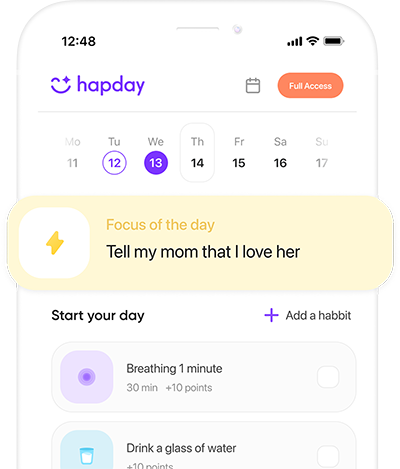Navigating today’s whirlwind world often feels like tackling a never-ending to-do list, especially when Attention Deficit Hyperactivity Disorder (ADHD) and anxiety are thrown into the mix. The Centers for Disease Control and Prevention (CDC) tells us that, as of 2020, approximately 9.4% of children and 4.4% of adults in the United States are living with ADHD. Meanwhile, the Anxiety and Depression Association of America points out that 18.1% of adults annually wrestle with anxiety disorders. These conditions frequently coexist, amplifying each other and complicating daily life.
A promising way to address the challenges of both ADHD and anxiety is mindfulness—a centuries-old practice now backed by contemporary science. Jon Kabat-Zinn, the visionary behind the Mindfulness-Based Stress Reduction program, describes mindfulness as paying attention deliberately and in the moment, without judgment. In this article, we’ll explore how embracing mindfulness can ease ADHD-related stress and anxiety, offering evidence-based insights and practical tips.
Table of Contents
- A Closer Look at ADHD and Anxiety
- The Science Supporting Mindfulness
- Mindfulness in Action for ADHD and Anxiety
- Learning to Blend Mindfulness and Cognitive Therapy
- Technological Aids in Mindfulness Practice
- Meeting the Mindfulness Challenge
- Real Stories of Change
- Conclusion
A Closer Look at ADHD and Anxiety
ADHD: Known for symptoms like inattention, hyperactivity, and impulsivity, ADHD can make learning, working, and interacting socially a struggle. Though its exact causes remain unknown, factors like genetics, brain structure, and the environment are believed to contribute.
Anxiety: This condition garners its power from excessive worry or fear, whether specific (like social anxiety) or generalized. It’s no stranger to those with ADHD, often intensifying their hurdles.
The Science Supporting Mindfulness
Research has been steadily piling up in favor of mindfulness as a valuable strategy for managing mental health issues. A 2018 meta-analysis in the Journal of Child and Family Studies highlighted that mindfulness-based interventions could noticeably reduce ADHD symptoms and sharpen attention.
Mindfulness works its magic by bolstering self-regulation, grounding awareness in the present, and cutting through automatic responses. Notably, a study from Psychiatry Research: Neuroimaging indicated that mindfulness practices actually change brain structures, boosting grey matter in areas crucial for attention, memory, and emotional control.
Mindfulness in Action for ADHD and Anxiety
1. Mindful Breathing
Start simple. Mindful breathing asks only that you focus on the in and out of each breath. This anchors the mind, curbing impulsivity and inviting calm.
How to Practice:
- Find Peace: Settle in a quiet space, seated or lying comfortably.
- Breathe with Awareness: Feel the breath enter and exit through your nose or observe the subtle movement in your chest.
- Refocus with Kindness: When your mind meanders, gently steer it back to the breath without harsh self-criticism.
2. Body Scan Meditation
In this exercise, mentally traverse your body from head to toe, tuning into sensations. This enhances awareness and fosters relaxation in those with ADHD.
How to Practice:
- Start at the Summit: Direct your focus to your head and slowly extend it downward through your body.
- Observe Without Judgment: Note any tension, aches, or ease as you scan.
- Finish with Care: Complete your journey by reaching your feet with gentle curiosity.
3. Mindful Walking
Mindful walking invites awareness into the act of moving, encouraging a connection with the sensations and rhythms of your steps—a boon for those who thrive on movement.
How to Practice:
- Pick Your Path: Select a serene, hazard-free route.
- Feet First: Focus on how your feet meet the ground.
- Embrace Your Environment: Let sights, sounds, and smells enrich your walk.
4. Loving-Kindness Meditation
This loving-kindness exercise directs compassion inward, then outward to others, effectively tempering anxiety and nurturing positivity.
How to Practice:
- Get Comfortable: Recline or sit in a relaxed manner.
- Start with Self-Love: Repeat affirming phrases like “May I be happy, may I be healthy, may I be safe.”
- Extend the Compassion: Gradually widen your focus to include loved ones, acquaintances, and the world at large.
Learning to Blend Mindfulness and Cognitive Therapy
Mindfulness-Based Cognitive Therapy (MBCT) marries cognitive therapy principles with mindfulness, offering a structured path forward. As noted in the Journal of Attention Disorders, MBCT shows promise for adults with ADHD, aiding in impulse control and emotional regulation.
Key Components of MBCT:
- Mindful Awareness: Cultivate a mindful awareness of thoughts and emotions to facilitate deliberate, rather than knee-jerk, responses.
- Rethinking Thoughts: Disrupt negative thinking patterns with conscious questioning.
- Daily Integration: Infuse mindfulness into everyday routines for lasting impact.
Technological Aids in Mindfulness Practice
In our tech-driven era, apps like Headspace, Calm, and Insight Timer provide portable mindfulness support. Research in JMIR mHealth and uHealth confirms these apps can lower stress and boost well-being.
For those with ADHD, it’s wise to use such tools sparingly and mindfully. Opt for audio over visual stimuli and regulate app usage to avoid digital overload.
Meeting the Mindfulness Challenge
While mindfulness offers valuable benefits, some may find it challenging—especially sitting still or maintaining focus. Shortening sessions, engaging in movement-based practices, and exploring various mindfulness techniques can make the journey more accessible.
Remember, mindfulness complements, rather than replaces, broader treatment plans. Consulting healthcare professionals remains vital for holistic well-being.
Real Stories of Change
Mindfulness isn’t just an abstract concept; it’s transforming lives. In one instance, a 10-year-old with ADHD significantly reduced impulsivity and sharpened focus through mindfulness, as documented in the Journal of Child and Adolescent Psychopharmacology.
Moreover, a study in the Journal of Adolescent Health found that teens with anxiety felt more equipped to handle their stress after participating in a mindfulness program.
Conclusion
Bringing mindfulness into daily life can significantly ease the burden of ADHD and anxiety. It fosters an awareness of the present, strengthens self-regulation, and enhances emotional stability, all of which are crucial to managing these conditions.
Although mindfulness isn’t a cure-all, it represents a powerful ally in a comprehensive approach to mental health. As research progress, so does our understanding of how mindfulness can guide those living with ADHD and anxiety towards a calmer, more focused, and resilient existence amid life’s chaos.



I’ve recently started practicing mindfulness to help manage my ADHD, and it’s been a game changer! The mindful breathing techniques are so simple yet effective. I never realized how much just focusing on my breath could calm my racing thoughts. Highly recommend giving it a try!
I love the idea of combining mindfulness with cognitive therapy! It’s interesting to see how they work together to help with impulse control. It’s like having a toolkit for managing ADHD and anxiety. I’m curious if anyone has tried this approach and what their experiences were like.
I have! Blending those two really helped me become more aware of my triggers and how to respond better in stressful situations.
While mindfulness seems beneficial, I’ve always struggled with sitting still. Can anyone share tips on how to make it work for those of us who find it hard to focus? I sometimes feel like I’m just adding more stress trying to be ‘mindful’.
Mindful walking sounds so appealing! I think it’s great that you can incorporate movement into mindfulness practice, especially for those of us who have trouble staying still. Can’t wait to try this out during my next walk in the park!
(Totally agree!) Walking outside while being aware of your surroundings sounds refreshing. It’s like hitting two birds with one stone—exercise and mindfulness!
(On a slightly sarcastic note) So, basically, if I sit still and breathe deeply, all my ADHD worries will disappear? Sounds easy enough—if only life were that simple! But in all seriousness, I’m looking forward to exploring these techniques; they seem promising.
(Just sharing my thoughts) While I appreciate the science behind mindfulness, I’m skeptical about its effectiveness for everyone with ADHD or anxiety. It seems like it might work for some but not necessarily all of us struggling with these challenges.
(What an inspiring article!) Mindfulness is such an amazing tool! The research backing its benefits is encouraging too. It gives me hope that there are practical solutions out there for managing ADHD and anxiety without relying solely on medication.
I’ve heard so much about loving-kindness meditation but never tried it myself! It’s amazing how directing compassion towards ourselves can change our mindset completely. Anyone here practice it regularly? Would love some insights!
It’s incredible that we have apps now to support mindfulness practices! I use Headspace daily, but sometimes find myself scrolling through other apps instead of meditating—definitely need reminders about mindful usage!
This article made me realize the importance of integrating mindfulness into daily life—it’s not just about quieting the mind but also being present in every moment! Can’t wait to start practicing these techniques!
Exactly! It’s all about small steps; even taking five minutes each day can lead to significant changes over time!
True! And remember, it’s okay if progress feels slow—it’s all part of the journey!
This article is a breath of fresh air! I love how it emphasizes mindfulness as a practical tool for managing ADHD and anxiety. It feels empowering to know there are effective strategies out there that can really make a difference in our daily lives. I can’t wait to try out the mindful breathing techniques mentioned. Thank you for sharing such valuable insights!
While the article has some interesting points, it seems overly optimistic about mindfulness as a cure-all. It overlooks the complexity of mental health issues like ADHD and anxiety. Just telling people to breathe deeply isn’t enough; these conditions often require more comprehensive treatment plans, including medication or therapy.
The statistics provided by the CDC and the Anxiety and Depression Association of America really highlight how prevalent ADHD and anxiety are in society today. It’s crucial for us to understand these conditions better, especially since they often coexist. Mindfulness offers a fascinating approach backed by research, which I appreciate seeing in articles like this.
Is mindfulness really going to solve our problems? It sounds nice in theory, but I wonder how effective it truly is when faced with real-life challenges of ADHD and anxiety. The article could have benefited from presenting more critical views on this practice rather than just promoting it without addressing potential drawbacks.
‘Mindful walking’? Great! Now I can be distracted while walking too! As if managing my thoughts wasn’t enough of a challenge, now I have to focus on my feet hitting the ground! Maybe I’ll just stick to my usual way of tripping over things instead of trying to be all zen about it.
‘Mindfulness changes brain structures’? Sounds like something straight out of a self-help book with no scientific backing. While some might find it useful, others could see no change at all. Articles like this need more empirical evidence before claiming such dramatic effects on brain chemistry.
‘Loving-kindness meditation’ sounds heartwarming! It’s intriguing how connecting with others through compassion can potentially reduce anxiety. This aspect is something I want to explore further because fostering positive emotions seems like an important step toward emotional stability.
‘Body Scan Meditation’? Does that mean I get to lie down and check if my belly is still round? Sounds like my favorite pastime! If only every form of meditation involved snacks… then I’d really be ‘mindful’ about it!
‘Technological Aids in Mindfulness Practice’—really? So now we need apps for everything? While they might help some people, isn’t there something ironic about using technology to escape from stress? We might end up overwhelmed by yet another screen instead of actually achieving peace.
‘Mindfulness isn’t a cure-all,’ as stated at the end is an essential reminder that resonates with me deeply. It’s refreshing that the article acknowledges this fact while still advocating for its benefits. A balanced approach is key when addressing mental health challenges; integrating mindfulness alongside other treatments could create a well-rounded strategy for those affected by ADHD and anxiety.